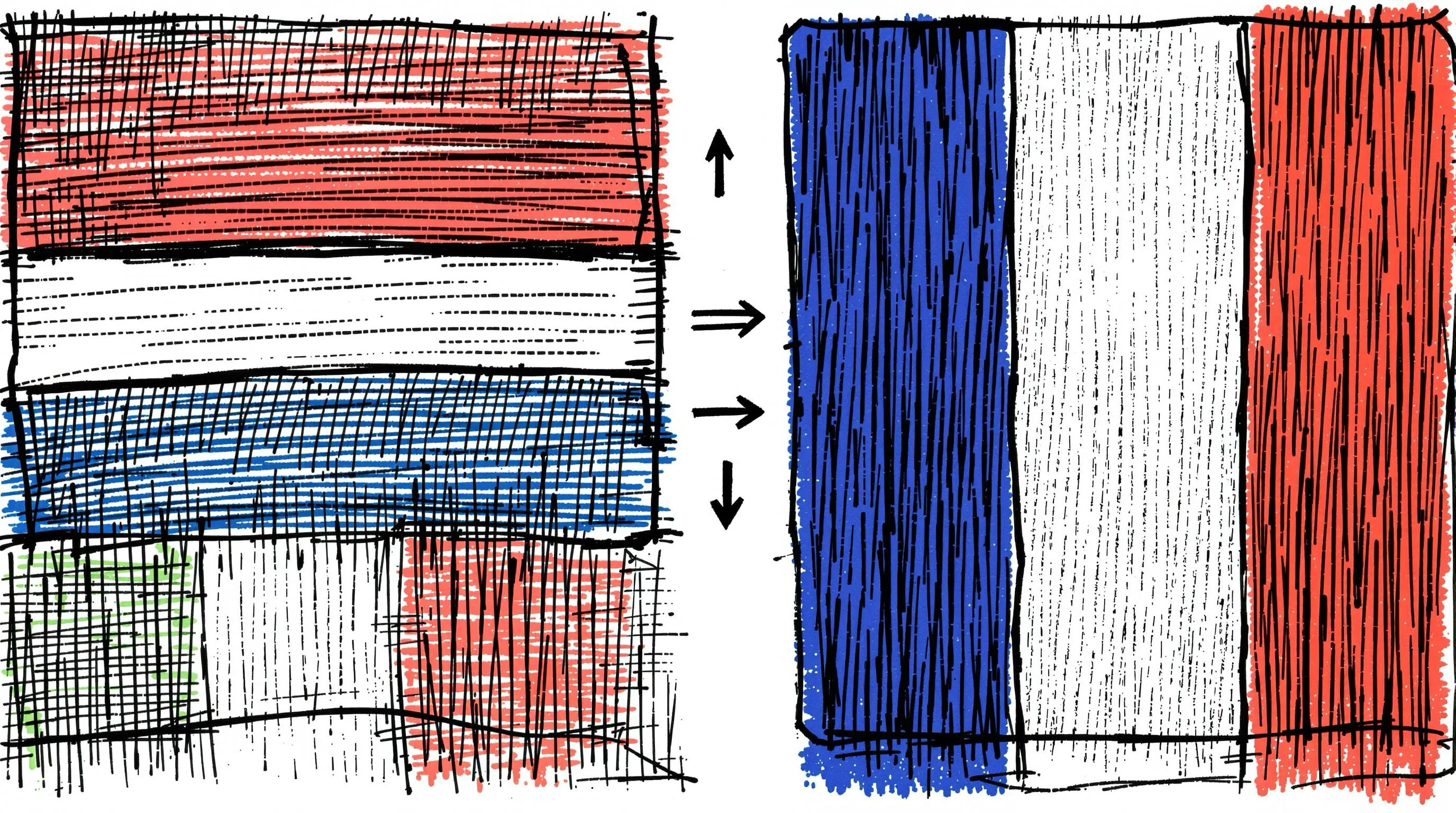The Flag Pattern

Rea,
Remember yesterday when we were talking about flags? We discussed how Spain’s flag had a lion in the middle but simple colors, and how the French flag just had three colors, and Italy too. There’s actually a fascinating story behind why so many flags look similar.
It all started with the Netherlands in 1572. They were fighting for independence from Spain and needed a flag that was completely different from the complex royal coats of arms with lions, eagles, and crowns. So they created something revolutionary: three simple horizontal stripes in orange, white, and blue.
This was the first tricolor flag in the world. No fancy symbols, no complicated designs - just three bands of color that anyone could recognize from far away. The idea was brilliant in its simplicity.
Other countries noticed. When France had their revolution in 1789, they loved the Dutch stripe concept but made it their own. They took the idea vertical instead of horizontal and chose blue, white, and red - colors that meant something to them. Blue and red represented Paris, while white represented the monarchy they were trying to reform.
Italy followed the same pattern when they unified as a country. They also went with vertical stripes but picked green, white, and red - colors that represented their hopes for their new nation. Green for the land, white for faith, and red for the blood of those who fought for freedom.
Soon, countries across Europe and beyond were adopting the stripe pattern. Belgium, Ireland, Germany, and dozens of others created their own versions. Each chose colors that told their story - some represented their landscape, others their struggles, and some their dreams for the future.
The stripe design worked so well because it was practical. Flags needed to be seen from a distance, easy to make, and simple enough that people could remember them. Unlike complex royal symbols that required skilled artists, anyone could sew together three strips of colored cloth.
But not every country followed the rectangle rule. Nepal decided to be completely different. Their flag has two triangles stacked on top of each other, representing the Himalayan mountains that define their country. It’s the only non-rectangular national flag in the world - proving that sometimes being unique is more important than following trends.
Today, when you see flags flying, you’re looking at a design language that started with one small country’s simple idea. The Netherlands probably never imagined that their three horizontal stripes would inspire a pattern used by nations around the globe.
Love, Abba
